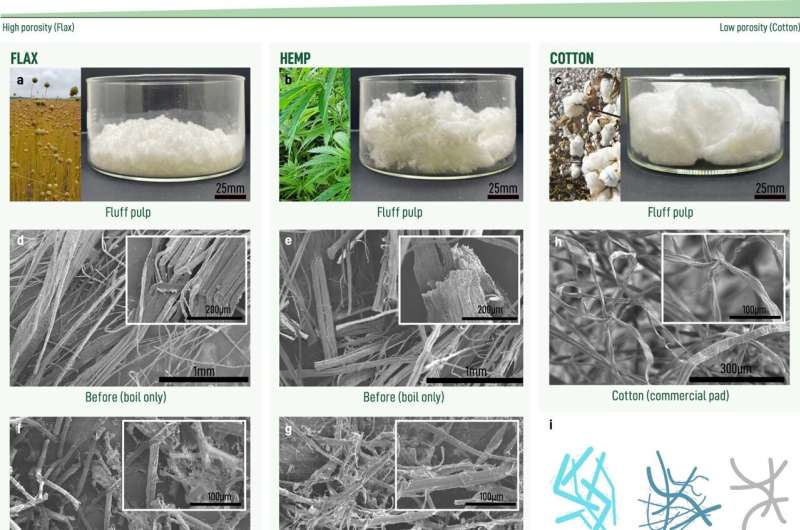This article has been reviewed according to Science X's editorial process and policies. Editors have highlighted the following attributes while ensuring the content's credibility:
fact-checked
trusted source
proofread
Making menstrual pads from succulents could improve access to sanitary products

A method for producing a highly absorbent material from sisal (Agave sisalana)—a drought-tolerant succulent plant—is described in a study published in Communications Engineering. The authors suggest that, with further development, their method could be used to produce locally sourced disposable menstrual pads in rural and semi-arid regions.
Manu Prakash and colleagues treated fibers extracted from sisal leaves with peroxyformic acid and sodium hydroxide before air drying and blending them. This generated a fluffy material that the authors suggest could be used as an absorbent layer in a disposable menstrual pad—they found that it is capable of absorbing more water than a commercially-available cotton menstrual pad (23.9 vs. 15.2 grams of water per gram of material).
The authors demonstrated this potential use by incorporating processed sisal into a prototype menstrual pad between a porous top layer and a waterproof bottom layer obtained from a commercial menstrual pad.
The authors estimated the raw materials and energy needed to manufacture processed sisal and compared this with previously reported data for the production of softwood timber and bleach cotton—materials that are often used in commercial menstrual pads. They estimate that manufacturing one kilogram of processed sisal in laboratory conditions generates 3.5 kilograms of carbon dioxide and consumes between 44.6 and 119.6 kilograms of water.
In comparison, the manufacturing of one kilogram of processed softwood timber generates 0.5 to 1.1 kilograms of carbon dioxide and consumes 61.8 kilograms of water, while one kilogram of bleached cotton generates 1.6 to 5.3 kilograms of carbon dioxide and consumes between 64.5 and 139.5 kilograms of water.
As sisal can be harvested year-round in semi-arid regions, the authors suggest that it could be used as an alternative to cotton or softwood timber to locally manufacture disposable menstrual pads in low and middle-income regions, particularly on land that is dry or often considered unsuitable for agriculture.
They propose that future research could explore approaches to increase the sustainability of sisal processing by investigating whether polymer-rich liquid waste generated during fiber treatment could be used in the production of fertilizer or compostable waterproof bottom layers for menstrual pads.
More information: Anton Molina et al, Agave sisalana: towards distributed manufacturing of absorbent media for menstrual pads in semi-arid regions, Communications Engineering (2023). DOI: 10.1038/s44172-023-00130-y
Provided by Nature Publishing Group





















